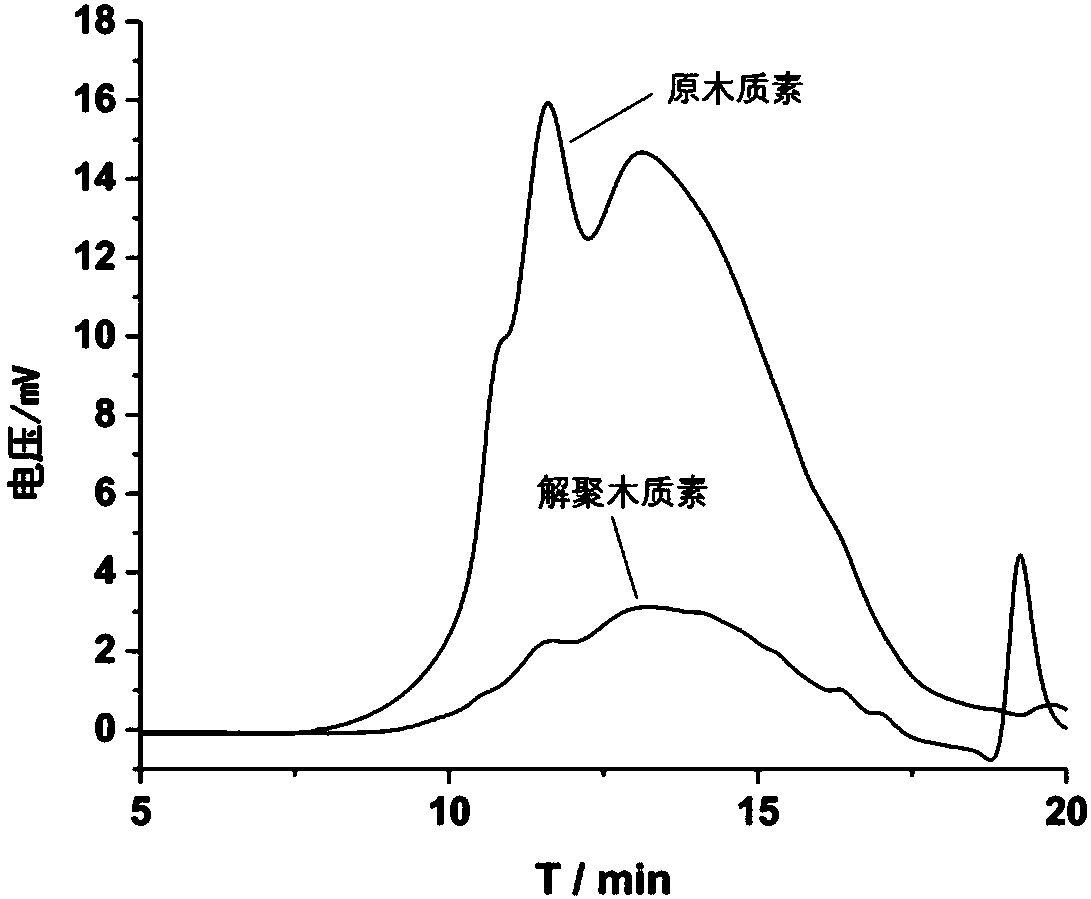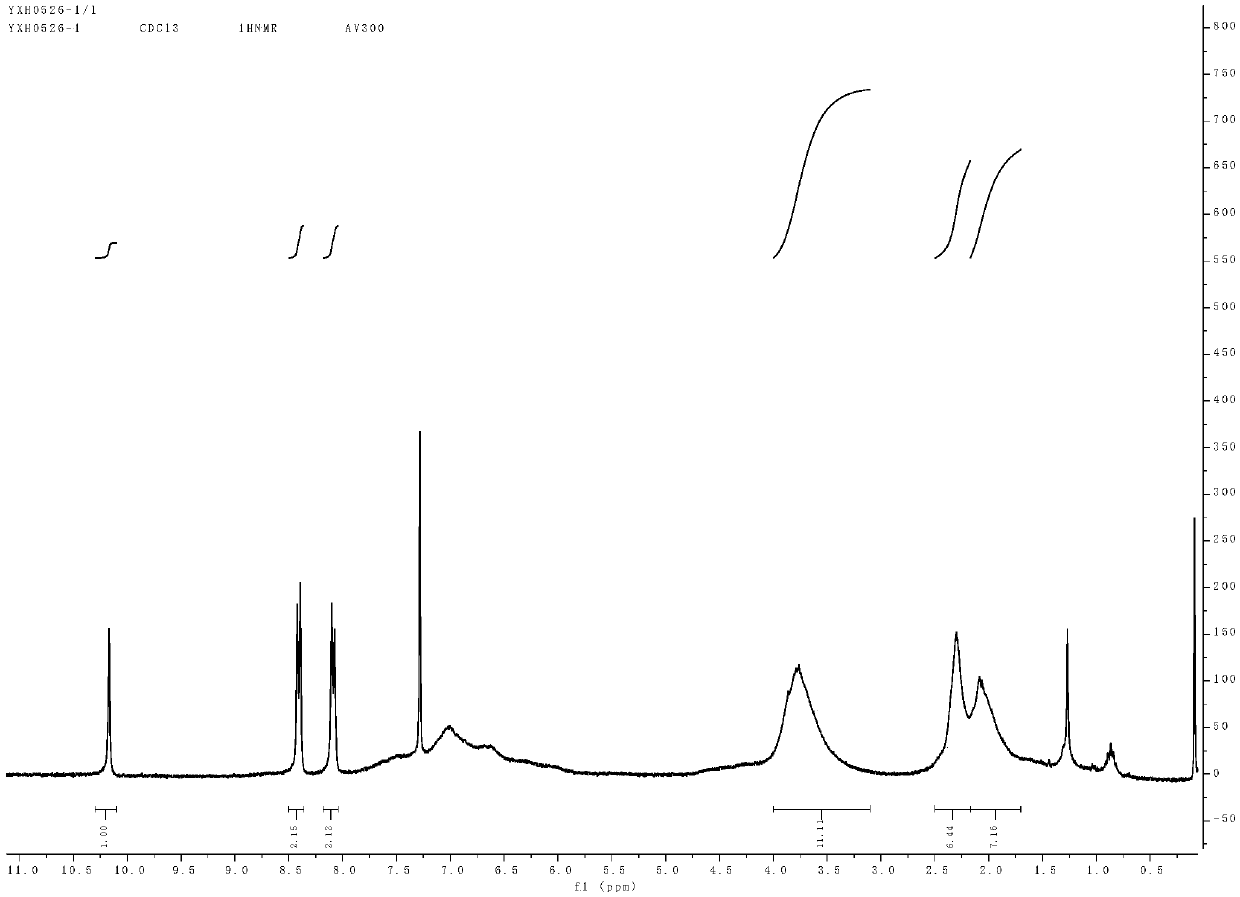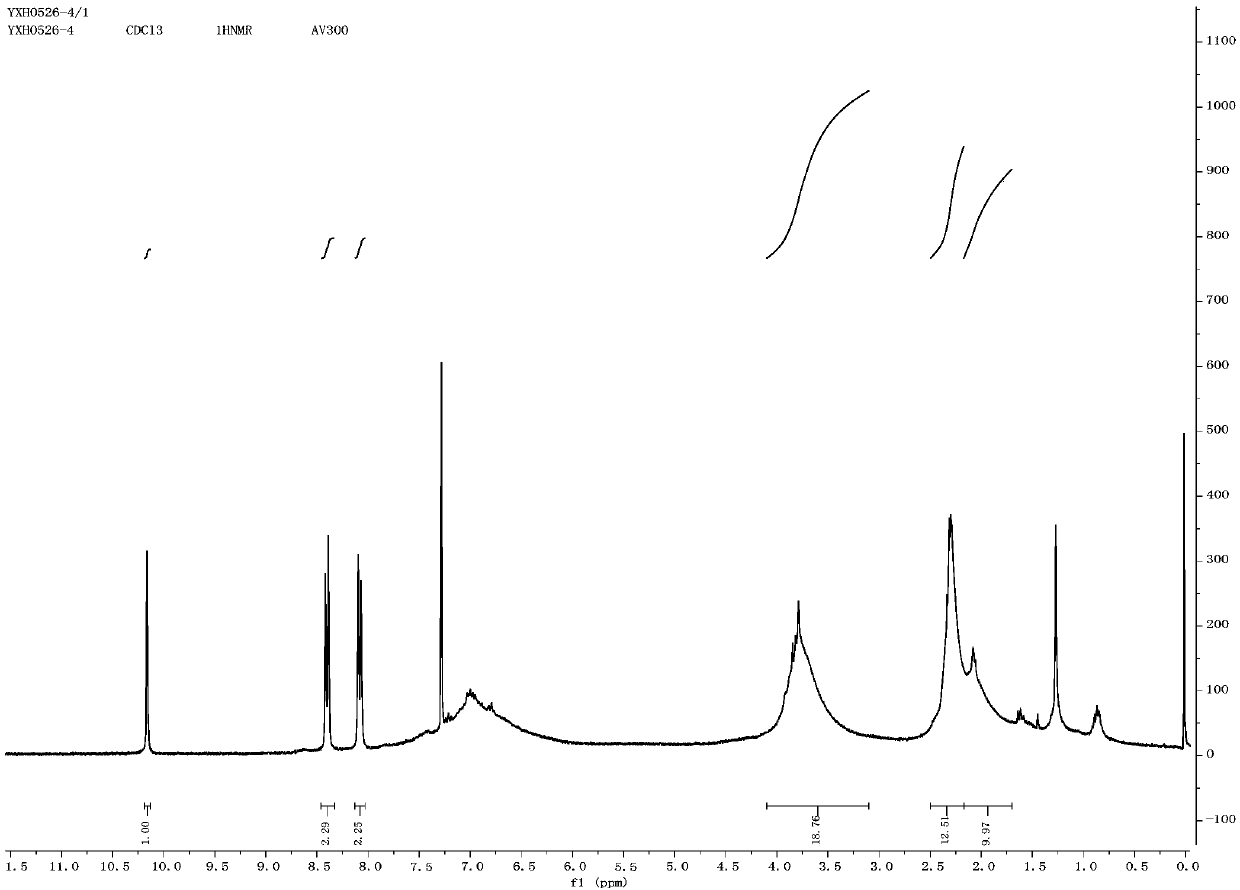Lignin depolymerization method
A technology for lignin and enzymatic hydrolysis of lignin, applied in the field of lignin conversion, can solve problems such as unfavorable recycling of molten salt hydrate, and achieve the effects of being conducive to recycling, mild reaction conditions and environmental friendliness
- Summary
- Abstract
- Description
- Claims
- Application Information
AI Technical Summary
Problems solved by technology
Method used
Image
Examples
Embodiment 1
[0022] Suspend 2g of Kraft lignin and 0.2g of D001 macroporous strongly acidic cation exchange resin in 20mL of ZnCl 2 Stir evenly in the molten salt hydrate, react at 90°C for 0.5h; after the reaction solution is cooled, filter it with suction, wash with water 3-4 times, and dry it in vacuum to obtain the degradation product with a yield of 92%.
Embodiment 2
[0024] Suspend 2g of Kraft lignin and 0.5g of 002SC strongly acidic styrene-based cation exchange resin in 20mL of ZnBr 2 Stir evenly in the molten salt hydrate, and react at 100°C for 1 hour; after the reaction solution is cooled, filter it with suction, wash it with water for 3-4 times, and dry it in vacuum to obtain the degradation product with a yield of 91%.
Embodiment 3
[0026] Suspend 2g of Kraft lignin and 1g of 002SC strongly acidic styrene-based cation exchange resin in 20mL of CuBr 2 Stir evenly in the molten salt hydrate, and react at 110°C for 2 hours; after the reaction liquid is cooled, filter it with suction, wash it with water for 3-4 times, and dry it in vacuum to obtain the degradation product with a yield of 85%.
PUM
 Login to View More
Login to View More Abstract
Description
Claims
Application Information
 Login to View More
Login to View More - R&D
- Intellectual Property
- Life Sciences
- Materials
- Tech Scout
- Unparalleled Data Quality
- Higher Quality Content
- 60% Fewer Hallucinations
Browse by: Latest US Patents, China's latest patents, Technical Efficacy Thesaurus, Application Domain, Technology Topic, Popular Technical Reports.
© 2025 PatSnap. All rights reserved.Legal|Privacy policy|Modern Slavery Act Transparency Statement|Sitemap|About US| Contact US: help@patsnap.com



